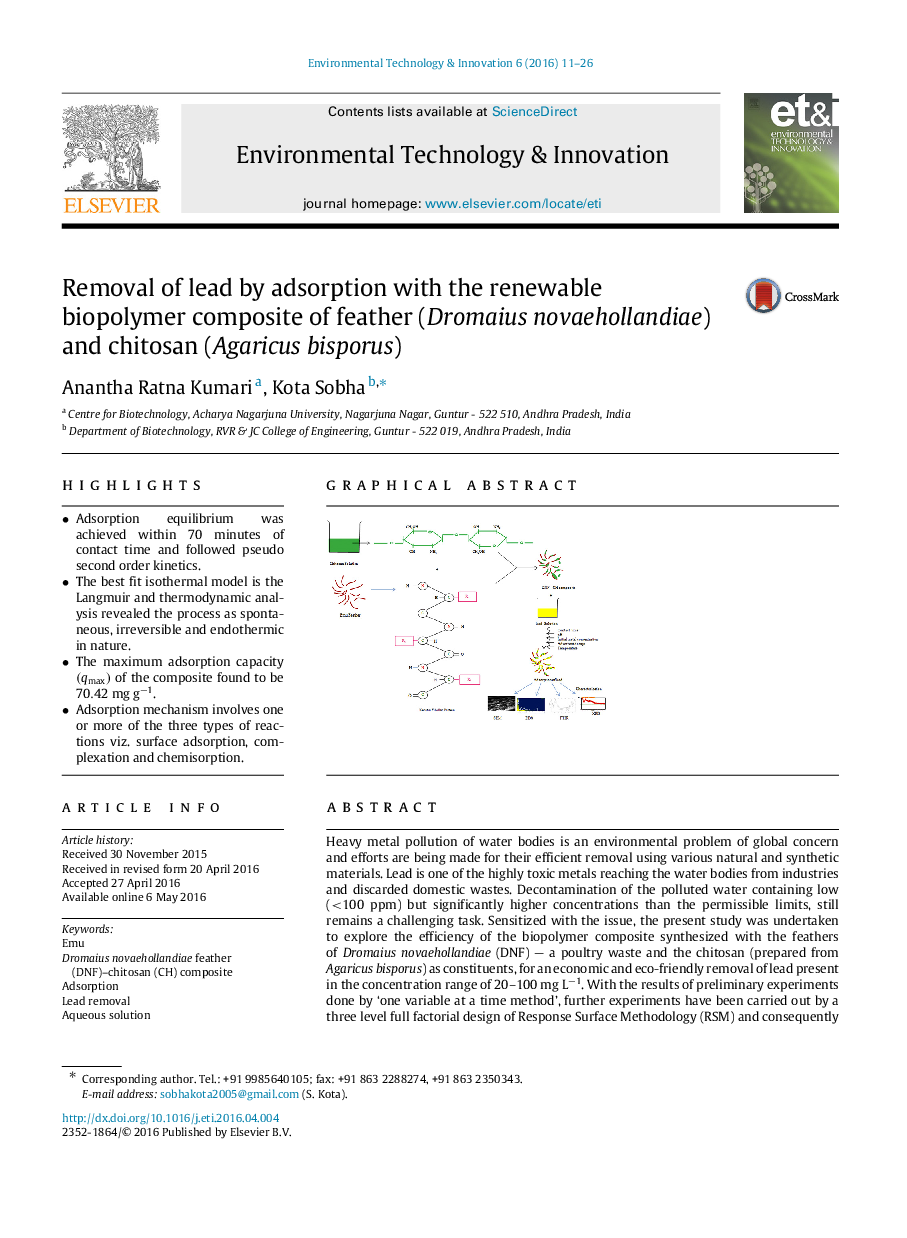| Article ID | Journal | Published Year | Pages | File Type |
|---|---|---|---|---|
| 4428157 | Environmental Technology & Innovation | 2016 | 16 Pages |
•Adsorption equilibrium was achieved within 70 minutes of contact time and followed pseudo second order kinetics.•The best fit isothermal model is the Langmuir and thermodynamic analysis revealed the process as spontaneous, irreversible and endothermic in nature.•The maximum adsorption capacity (qmax) of the composite found to be 70.42 mg g−1.•Adsorption mechanism involves one or more of the three types of reactions viz. surface adsorption, complexation and chemisorption.
Heavy metal pollution of water bodies is an environmental problem of global concern and efforts are being made for their efficient removal using various natural and synthetic materials. Lead is one of the highly toxic metals reaching the water bodies from industries and discarded domestic wastes. Decontamination of the polluted water containing low (<100 ppm) but significantly higher concentrations than the permissible limits, still remains a challenging task. Sensitized with the issue, the present study was undertaken to explore the efficiency of the biopolymer composite synthesized with the feathers of Dromaius novaehollandiae (DNF) — a poultry waste and the chitosan (prepared from Agaricus bisporus) as constituents, for an economic and eco-friendly removal of lead present in the concentration range of 20–100 mg L−1. With the results of preliminary experiments done by ‘one variable at a time method’, further experiments have been carried out by a three level full factorial design of Response Surface Methodology (RSM) and consequently the optimum conditions for the biosorption of lead have been identified as 6.96 g L−1 of adsorbent dosage, 19.77 mg L−1 of initial adsorbate concentration and 4.4 pH. The adsorption equilibrium data followed Langmuir isotherm model and pseudo second order kinetics. Analysis of thermodynamic parameters demonstrated the process of adsorption as spontaneous, irreversible and endothermic. Characterization of the adsorbent by SEM–EDS, FTIR and XRD, before and after adsorption, revealed that the adsorption of lead is possibly due to the mechanisms of complexation (between metal and ‘N’ and ‘O’ in the composite), chemisorption and ion exchange.
Graphical abstractFigure optionsDownload full-size imageDownload as PowerPoint slide
